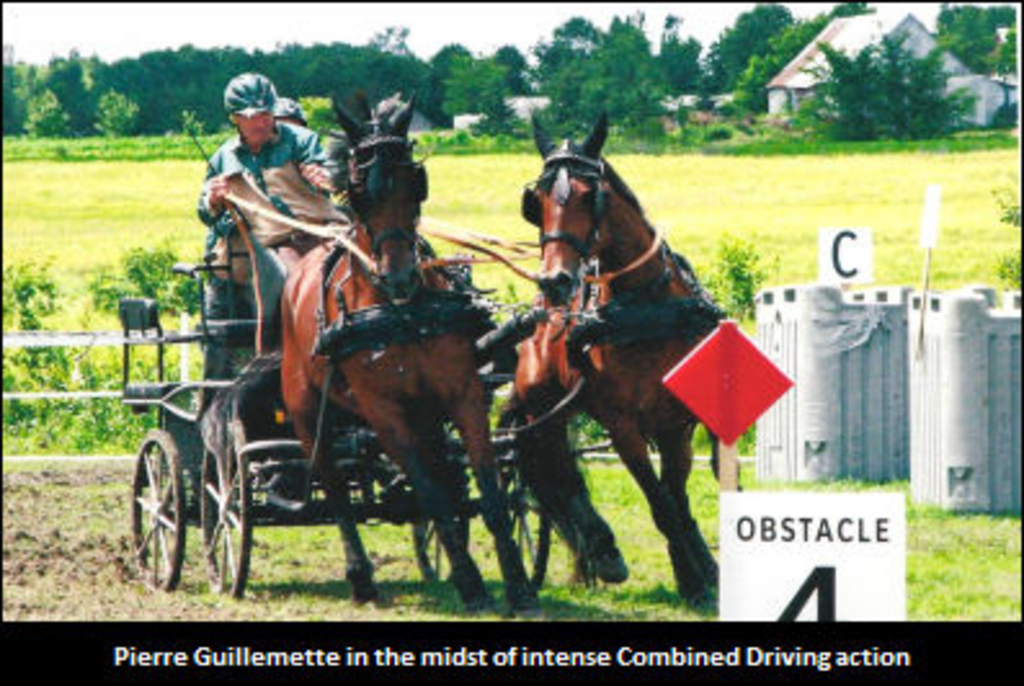
Quebec breeder and former Standardbred Canada Chairman of the Board Pierre Guillemette has told Trot Insider that he has had some free time since Jackson Wittup made the smooth transition into the role of SC Chair
. Though he does have some new-found time, Guillemette is re-investing it back into standardbreds, but in a much different capacity.
Guillemette is still breeding horses at Ferme Guillemette in Becancour, Que., but he is also actively taking part in the sport of Combined Driving, which the 56-year-old says is popular in Europe and has been growing steadily in Canada for the last 10 years.
"I love horses," Guillemette told Trot Insider. "I'm still involved in the breeding, but at the same time I have been spending a good deal of time training standardbreds." The training Guillemette refers to is not for the oval tracks of the harness racing world, but for the sometimes twisting, turning courses of Combined Driving venues.
Combined Driving --- referred to by some as Horse Driving Trials --- is an equestrian sport which is focused around carriage driving. Although the equine performers are usually of the cold-blooded variety, Guillemette has conditioned two of his retired trotting mares, MC Suzy Rail and Ruby Cabernet, to thrive in the competition.
"I do it because I love to be around the horses," he said. "It's different than training horses to compete for purses. We're racing for ribbons. It's quite enjoyable."
 Guillemette, along with his pair of trotting mares and his buggy imported from Germany, has found both satisfaction and success in the venture. The two mares that Guillemette is has been using are nine-year-old Donerail bay MC Suzy Rail and six-year-old Balanced Image bay Ruby Cabernet.
Guillemette, along with his pair of trotting mares and his buggy imported from Germany, has found both satisfaction and success in the venture. The two mares that Guillemette is has been using are nine-year-old Donerail bay MC Suzy Rail and six-year-old Balanced Image bay Ruby Cabernet.
Traditionally, Combined Driving features three phases.
The first phase consists of two elements: the first being presentation and the second being dressage. During presentation, judges grade the horses and driver on turnout, safety, cleanliness, general condition and impression of the horses, tack, vehicle, matching of the horses or ponies, and the dress of the driver and groom. The second element of the first phase, dressage, is somewhat similar to traditional dressage performed under saddle. Horses are expected to keep on their manners during dressage and be obedient and make the display look effortless.
The second phase, simply called 'marathon,' encompasses two elements: 'the sections' and obstacle driving. The marathon phase is similar to what is better known as 'eventing,' in which speed and endurance are on display. The obstacle driving element requires the horses and drivers to navigate through a course with hazards, natural features (slopes, trees, etc.) and man-made obstacles.
The third phase, entitled 'cones,' is similar to the show jumping phase of eventing, as obedience, speed and accuracy is put to the test. Up to 20 pairs of tightly-grouped cones may be on the course. Each cone has a ball placed on top of it. The cones phase is timed and points are deducted from the participants when cones are knocked over.
"Cold-blooded horses are traditionally used for these events, but the two mares have been doing very well and seem to be enjoying it," Guillemette told Trot Insider.

